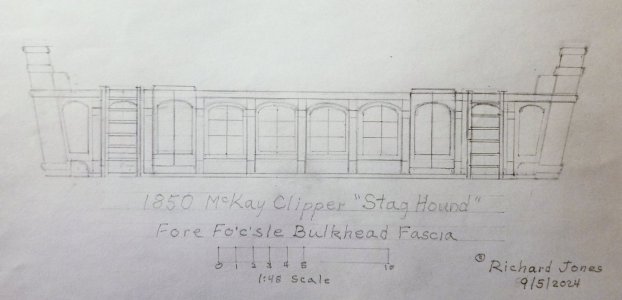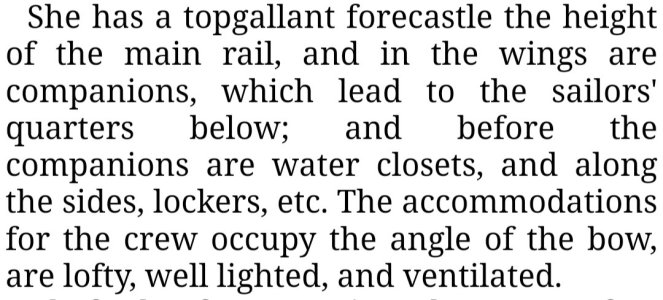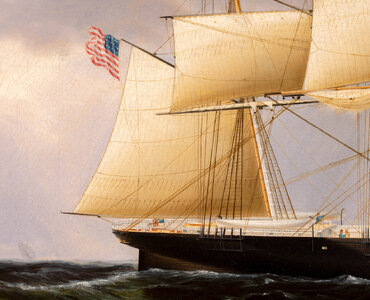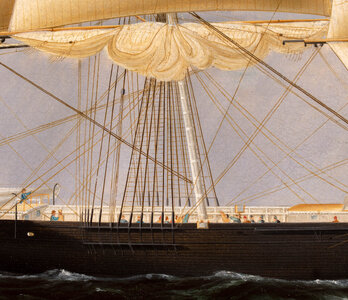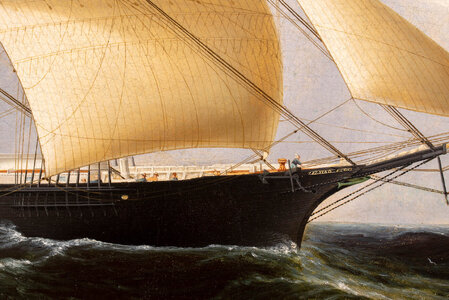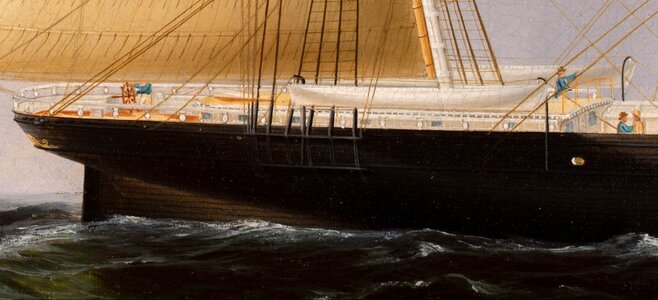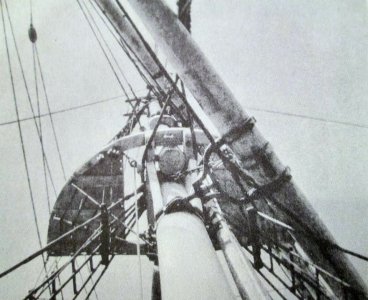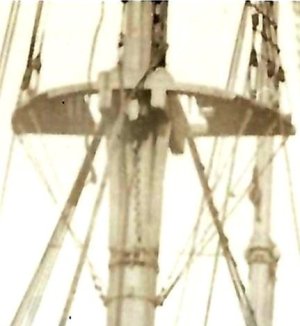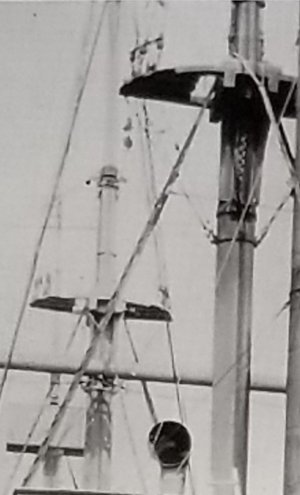Paul Ron,
Rob Wiederrich and I are doing a reconstruction of Donald McKay's premier clipper
Stag Hound. Referencing Duncan McLeans
Boston Daily Atlas December 20, 1850. From this source, we learned that her forecastle height was set at the 5' high main rail. This arrangement was very similar to that of
Flying Fish. The main difference being her main rail height was shorter by 6 inches. In the case of
Stag Hound McLean mentions that in the after wings of the forecastle, there are water closets for use of the crew. Since she was equipped with a patent windlass with ends which ungeared, we discovered that an 1850 Emerson-Walker device met the description. Associated weight and height made us decide that this part would have been mounted 3 feet below the main deck. Opening up the area also created an 8 foot accomodation for crew. That meant the forecastle bulkhead would double as an aft wall instead of an open deck. We have now determined that such would have also been the same layouts for
Flying Cloud and
Flying Fish. Between decks on all of McKay's clippers were 7 feet or higher. So why would he then stuff his crew into short spaces like 4 & 1/2 to 5 feet? I have attached my conceptual sketch of the forward bulkhead on
Stag Hound. Rob and I discussed water closet placement and determined, like those in the stern which were 8 feet below, those in the bow would also have been located below. In fact, reading an even more detailed passage about the forecastle arrangement on
Flying Fish sheds even more light on this topic. He describes accommodations for one watch of the crew being set up below. Twin companions lead to these quarters.
Before these companions are twin water closets (
not aft) as current
Flying Fish plans illustrate. This is our latest revision which I believe will lead to cleaner, more believable ship's forecastles on McKay models.
